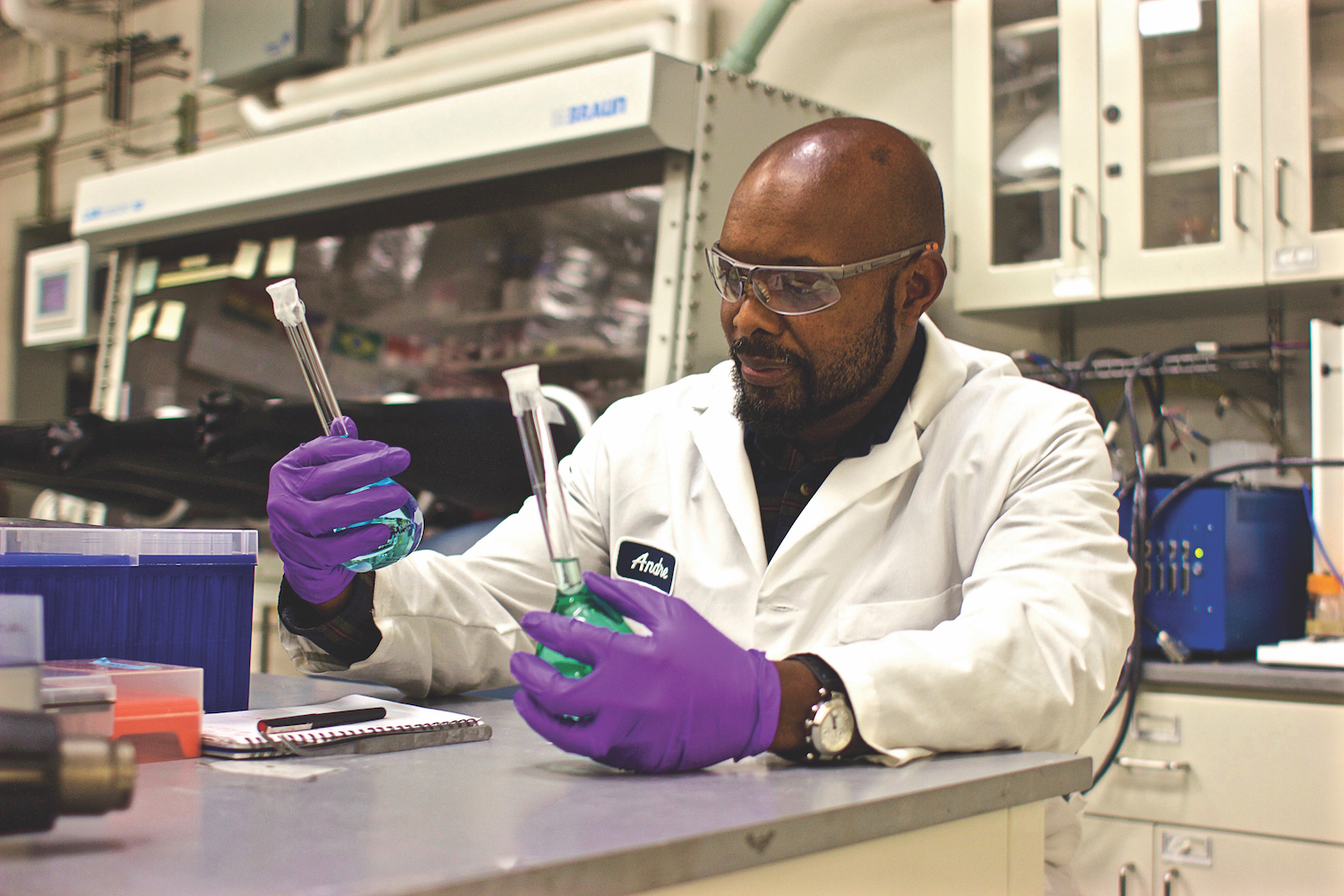The old “solar cell” revolution has come to a halt. The types of solar cells that are now widespread were commercialized more than fifty years ago. Despite scientific improvements and increased attention to solar energy, the cost of conventional solar cells remains high due to the high cost of silicon, which converts solar energy into electric energy by producing electrons when light hits the silicon layer in the solar cell.
Understanding the negative effects of fossil fuels and the necessity for cheaper renewable energy, scientists have worked on engineering new solar cell designs using different materials. Currently, in contrast to the inorganic solar cells that dominate the field, organic polymer solar cells have been getting much attention due to their mechanical flexibility, large area, light weight, and low costs in mass-scale production. Organic polymer solar cells differ in that carbon based polymer is used, and not the conventional silicon. The main hurdle that many researchers face in developing organic polymer solar cells is their low efficiency. Although slow improvements have been made, the most common design, single-junction cells with only one electron-producing active layer, have only an 8 to 10% power conversion efficiency—far less than the commercially required efficiency of over 20%.
Recently, researchers in Dr. Andre Taylor’s Transformative Materials & Devices Lab broke through the 10% boundary by incorporating multiple cocrystalline squaraines into the solar cell’s active layer. These cocrystalline squaraines are organic fluorescent dyes that absorb light and produce electrons, which are then picked up by the interlayer to produce a current. Dr. Tenghooi Goh, a recent PhD graduate, explained that their new design, which contains a greater number of electron donors, allows the solar cell to absorb a wider range of wavelengths, or types of light. Typical polymer cells only absorb specific types of light and waste the light outside that range, resulting in decreased efficiency. However, Goh said that incorporating more materials is extremely complicated, as undesirable interactions between incompatible chemicals can occur. “Mixing things are not as simple and direct as it may suggest. In a lot of times, if you mix two incompatible things together… they actually drive down the efficiency instead of having a positive effect.” Even with this setback, Goh stated this was a path to a fundamental breakthrough in organic polymer solar cell efficiency. Thus, the researchers focused on minimizing this potential destructive interaction.
Previously, Goh and Taylor’s team successfully combined squaraine and high efficiency polymer component, thanks to certain properties of the system. Chromophores, or light-sensitive molecules, transfer energy between an acceptor and donor molecule through Förster resonance energy transfer, or FRET for short. Goh referred to FRET as “a mechanism like photosynthesis, with electrons jumping over non-conducting gaps”. Therefore, FRET stabilized the final mixture by allowing energy to be transferred between materials, ultimately helping the team mix together potentially incompatible components so that the wide wavelength of light was preserved. The energy transfer between two squaraines, ASSQ and DPSQ, along with high performance electron donating compounds in active layers, helped stabilize the final mixture in the active layer.

The team found that photovoltaic efficiency increased by over 25% on average between solar cells with and without ASSQ and DPSQ incorporated. In addition, multiple FRET pairs with rapid and efficient energy transfer were observed through spectroscopy techniques, which measures rapid changes in the absorbance of certain wavelengths of light. Such observations corresponded with the abovementioned explanation validating that FRET was indeed responsible for the stable combination of components.
The solar cells have their shortcomings—Goh pointed out that the organic polymer solar cells are not free from environmental consequences such as harmful solvent waste. Even so, this research can provide greater benefits by lowering costs of production, leading to more widespread usage of solar cells and decreased fossil fuel usage. The efficiency of Goh’s team’s solar cell was recorded to be up to 10.7%, widely considered a milestone in efficiency of organic polymer solar cells. Furthermore, he added that this is before efficiency optimization by researching and modifying the layers surrounding the active cell. Goh is very hopeful about future research. “In the future, if we combine the pinnacle of different research together, we can probably reach greater efficiency.”
